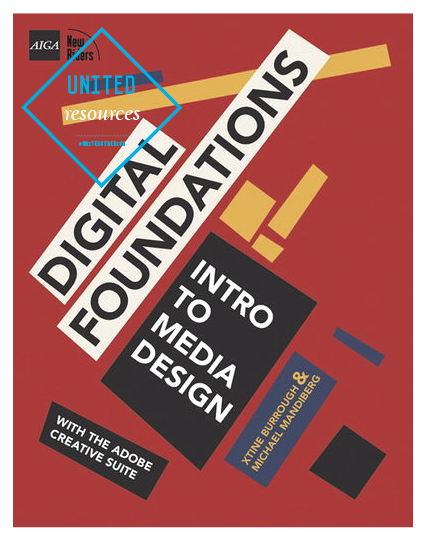Much of the content from United By Design is from the open source book Digital Foundations.
“Digital Foundations: An intro to media design” was written by Michael Mandiburg and Xtine Burroughs, who are both educators in design. Whilst teaching classes that take place in software laboratories, they noticed that many of their students expected to learn to use software, but gave little consideration to aesthetics or art and design history.
At first they tempted to oblige their students’ thirst for so-called practical knowledge, but they recognised that without visual, theoretical, and historical frameworks, practical knowledge is basically useless. After settling for years on books that don’t really encapsulate a class, they finally decided to write the book that all introductory media design students should be using. A student can be working towards a degree in art, communication, graphic design, illustration, and so on in a traditional classroom setting, or a self-taught found-it-on-the-bookstore-shelf learner. Within the 20 chapters of the book, they have shared some history, followed by visual references, and then digital exercises that don’t’ just talk about which button to click, but to connect technical training to colour theory and composition.They explore creative software in a manner that brings design principles into the software demo.
Originally, this book was printed as a manual to the Adobe Creative Suite, the software found in classrooms and labs around the world. However, just a month after the book was published, they teamed up with Floss Manuals to convert the manuscript into one that teaches the same design principles using open source software such as Gimp, Inkscape, Scribus and other Libre Graphics tools.
Digital foundations contains a small amount history, followed by visual references, and digital exercises that explore creative software (Adobe) in a manner that brings design principles into the software demo. This work received praise from other creatives such as Ellen Lupton, who describes it as “A book that teaches visual thinking and software skills together. The text leads readers step-by-step through the process of creating dynamic images using a range of powerful applications. The engaging, experimental exercises take this project well beyond the typical software guide.”
To find out more information, visit their website:
